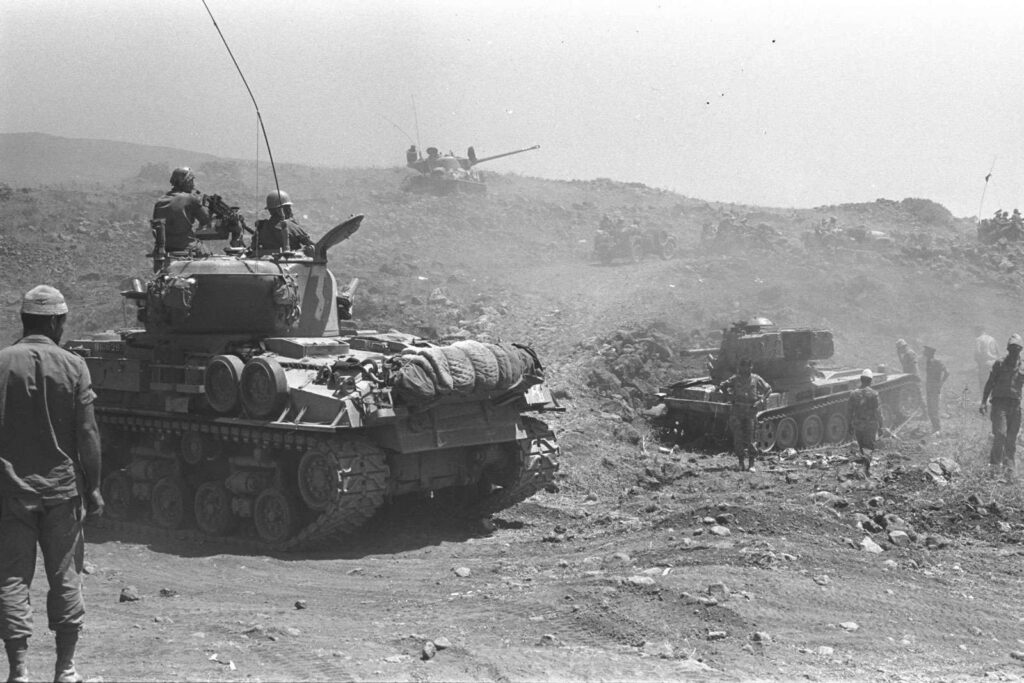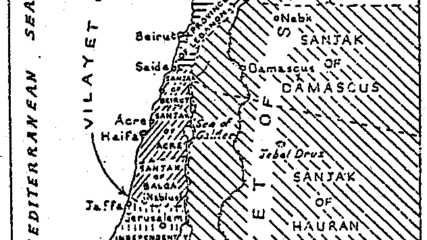June 9, 1967
Israeli forces under the command of Maj. Gen. David Elazar launch an offensive into the Syrian-controlled Golan Heights.
The first days of the war see Israel launch an aerial offensive aimed at neutralizing the air forces of Egypt, Jordan and Syria. After the initial pre-emptive strike against Egypt on the morning of June 5, Syrian planes conduct air raids over portions of the Galilee and attempt to bomb the Haifa oil refinery. These attacks are repelled by the Israeli Air Force, which destroys more than 50 Syrian planes, two-thirds of the country’s air force.
Despite having their air losses, Syrian troops stationed on the Golan Heights begin shelling Rosh Pina and other Israeli communities in the north of the country June 6. Two Syrian divisions advance toward Kibbutz Dan before being repulsed by Israeli air and ground forces. Israel stops the Syrian forces despite having most of its forces in Sinai and on the Jordanian front during the first three days of the war.
By the end of the day June 7, most Egyptian forces are retreating toward the Suez Canal, and Israel has captured the Old City of Jerusalem and large portions of the West Bank. Syrian shelling continues throughout June 7 and 8. After Egyptian President Gamal Abdel Nasser refuses a U.N. cease-fire late in the day June 7, the Security Council convenes for a special session on the afternoon of June 8. The Security Council hears that U.N. observers in Tiberias “reported on the morning of June 8 that very heavy continuous air and ground fire was taking place in the general area of the Israel-Syrian central demilitarized zone.” Addressing the Security Council, Abba Eban, Israel’s foreign minister, says, “I refer especially to the government of Syria, which has not indicated its attitude on the cease-fire resolution. On the Syrian-Israel frontier the fighting has indeed, according to my reports, become intensified in recent hours.”
With a cease-fire looming, it appears that the war will conclude with no further action on the Syrian front. On June 8, farmers from Israel’s northern communities, long the target of shelling from Syrian forces on the Golan, come to Jerusalem to petition Prime Minister Levi Eshkol for action against the Syrians. Eshkol meets with IDF Chief of Staff Yitzhak Rabin and fellow Gens. David Elazar and Yigal Alon to discuss the options for an attack on Syria. Defense Minister Moshe Dayan, who opposes opening a third front. is excluded from the meeting.
That evening Dayan is invited to a ministerial meeting to discuss the plan of action. Dayan remains adamant that Israel should not attack Syria. He is fearful of provoking the Soviet Union and of Israel stretching itself too thin. He says, “It is true that the Syrians embitter the lives of our settlements on the northern border. But if the settlers are unable to stand it and the situation needs changing, it is better to move the farm buildings away from the border than to embroil Israel in a state of war with another Arab state.” (Bar-On, Mordechai, Moshe Dayan: Israel’s Controversial Hero, New Haven, CT: Yale University Press, 2012, p. 138.)
At 3:30 a.m. June 9, Syria announces its intentions to accept a cease-fire. Recognizing that the announcement provides Israel with a short window to invade the Golan, Dayan phones Elazar and orders him to attack. Dayan does not inform Eshkol or Rabin about his intentions. After a three-hour Israeli aerial assault on Syrian positions, the IDF launches five ground attacks on the Golan. Israel suffers high casualties before controlling the heights and accepting a cease-fire that ends the war June 10.









